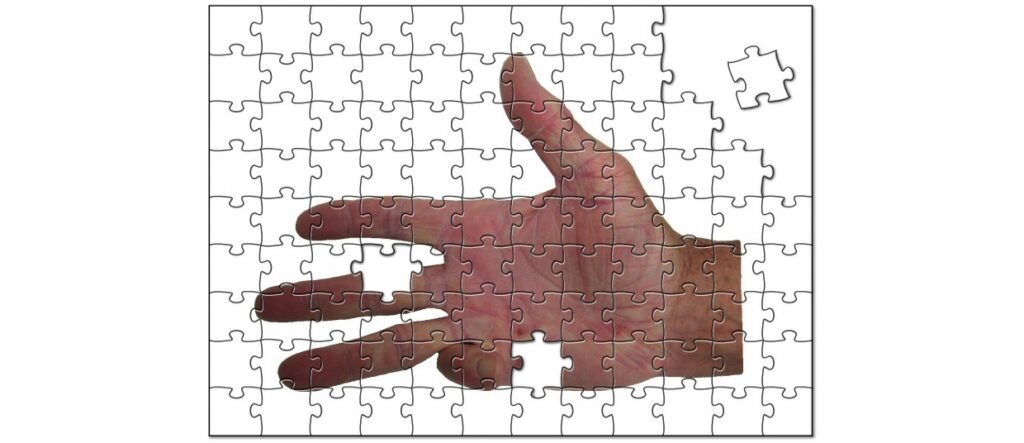I’m optimistic 2020 will be the year of progress solving the Dupuytren puzzle. Dupuytren seems at times a jigsaw puzzle with too many pieces. Pieces from other puzzles. Pieces that look as though they should fit, but don’t. Pieces that belong in one location, but seem to fit in many different locations.
One strategy to solve a jigsaw puzzle is to first find the four corner pieces. They give clues to look for the next pieces. We already have two corner pieces of the Dupuytren puzzle: the biology of tissues removed at surgery and the demographics of people who have developed Dupuytren. The third corner piece of the puzzle is a snapshot of Dupuytren activity in the blood to predict whether Dupuytren will or won’t develop, whether it will or won’t progress, and whether it does or doesn’t respond to medical treatment. This piece will come from the blood biomarker study of the IDDB, the International Dupuytren Data Bank. The final fourth corner piece is a list of medicines to modify Dupuytren biology to prevent it from developing, progressing, or recurring after a corrective procedure. We need the first three corners of the puzzle in place to figure out where to start looking for the final fourth corner piece.
The pilot study – the third corner piece – is underway. Email invitations are going out now to potential blood draw participants enrolled in the IDDB. Of the 4200 IDDB enrollees, 82 met the stringent selection criteria based on the age of onset, locations of disease, family history details, and home address. Of these, 50 will be confirmed on a first-come-first-serve basis. 50 more participants without Dupuytren or a family history of Dupuytren will act as controls.
If you enrolled in the IDDB study and meet the selection criteria, emails are going out.
If you don’t get an invitation, don’t panic. This is a small pilot study, not a large definitive study. This is the study that we need to do to get the ball rolling for the definitive study – to provide preliminary data to bring to the NIH to make the case for the NIH to set up funding for large definitive studies. This pilot study is critical to progress in Dupuytren research, which currently has no federal funding. It’s taken years of fundraising and saving to meet the $400,000 laboratory budget for this pilot study. Larger scale research needs large federal grants. This study is the cornerstone of the path to jumpstart federal funding for the next research with far more participants.
This work has many moving parts. It’s taken sustained hard work and sustained financial support from the Dupuytren community to get this far. We are here. It is happening! I’m deeply grateful to everyone who has supported and who continues to support this work. Your participation – your ideas, your enrollment, your funding – have set the stage for 2020 to be the year we start solving the Dupuytren puzzle – together.
Thanks and Happy New Year!
Charles Eaton MD






